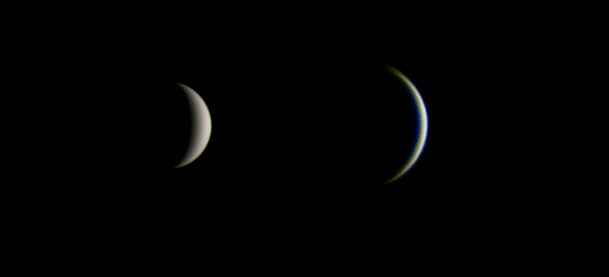When gazing up at the night sky, many of us are captivated by the bright, wandering stars that we know as planets. Among them, Venus and Mercury stand out for a unique reason—they exhibit phases, much like our Moon. But why is it that these two planets show phases, while others like Mars, Jupiter, and Saturn do not?

Different phases of Venus as seen with our Celestron telescope.
Understanding Planetary Phases
Planetary phases occur when a planet shows varying portions of its illuminated side to an observer on Earth, similar to how the Moon goes through its cycle of new, crescent, quarter, and full phases. These phases are most prominently observed in Venus and Mercury, the two innermost planets of our Solar System.
The Key Role of Orbital Position
The visibility of planetary phases is largely determined by the position of a planet relative to Earth and the Sun. Venus and Mercury are both closer to the Sun than Earth, which classifies them as "inferior planets." Because of their orbits, we see them from different angles as they move around the Sun.
When Venus or Mercury is positioned between Earth and the Sun, we can only see a thin crescent of their illuminated side, with the rest in shadow. As these planets move to the far side of their orbits, we begin to see more of their illuminated side, eventually viewing a nearly full phase when they are on the opposite side of the Sun from Earth. However, a fully illuminated Venus or Mercury (similar to a full Moon) is nearly impossible to see from Earth due to the Sun's glare.
Why the Outer Planets Don’t Show Phases
Mars, Jupiter, Saturn, Uranus, and Neptune, the outer planets, do not display phases in the same way. These planets are all located beyond Earth’s orbit, which means we always view their illuminated side almost entirely. As a result, outer planets appear nearly full from our perspective all the time. The slight variation in how much of their illuminated side we see is minimal, making it imperceptible to the naked eye.
Observing the Phases of Venus and Mercury
Seeing the phases of Venus and Mercury requires some observational skill. Venus is easier to observe due to its brightness and larger apparent size, which can be viewed with a small telescope or even binoculars. Mercury, being closer to the Sun and smaller in size, is more challenging to observe, but during certain times of the year, when it reaches a favorable position in its orbit (known as greatest elongation), its phases can be discerned with a telescope.
A Window into Planetary Motion
The phases of Venus and Mercury offer more than just a visual spectacle; they provide insight into the mechanics of our Solar System. The first observations of Venus’s phases by Galileo Galilei in 1610 were a pivotal piece of evidence supporting the heliocentric model of the Solar System, which proposed that planets orbit the Sun, not Earth.
Post a comment
| Date | Name | Comment |
|---|